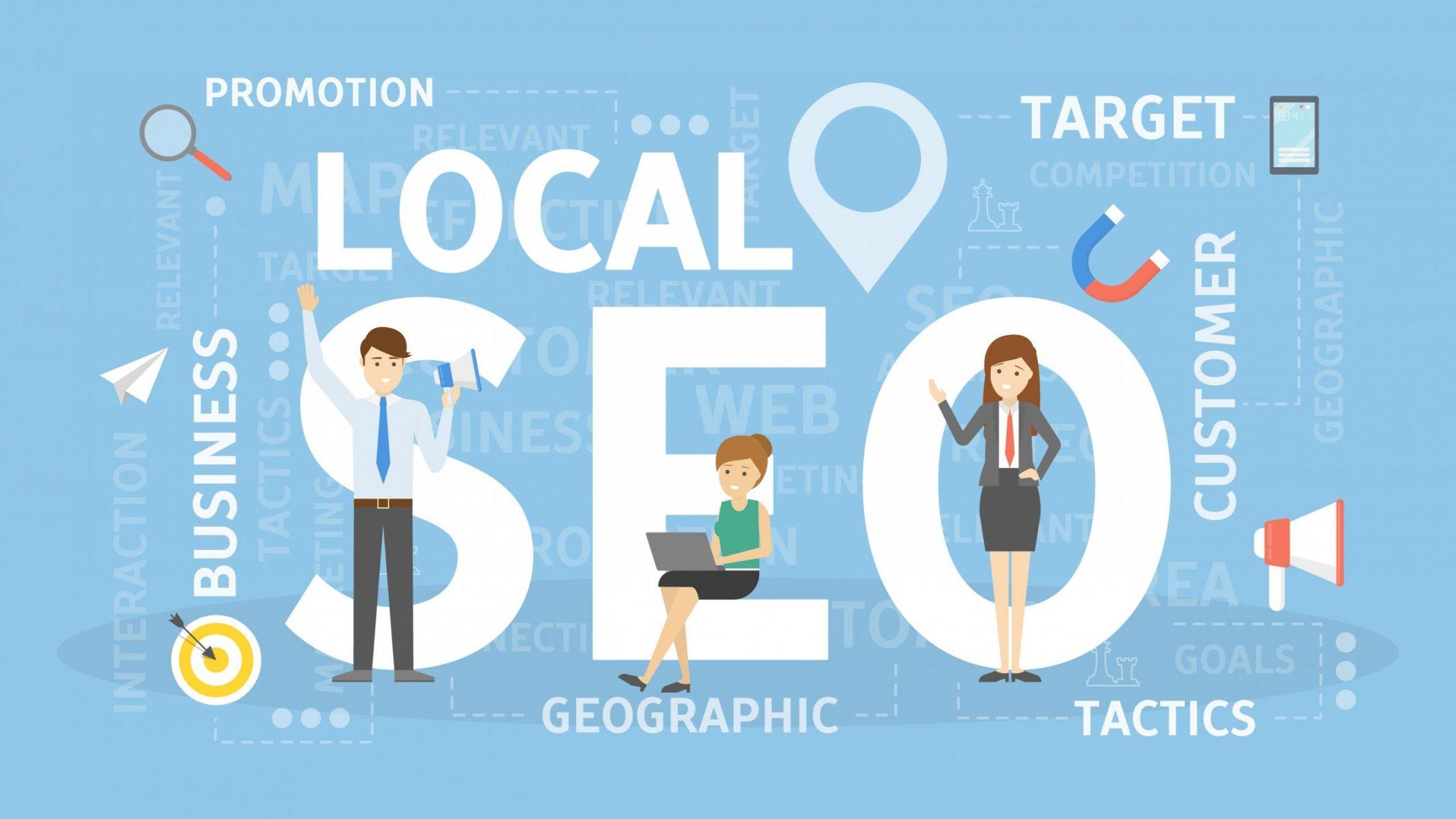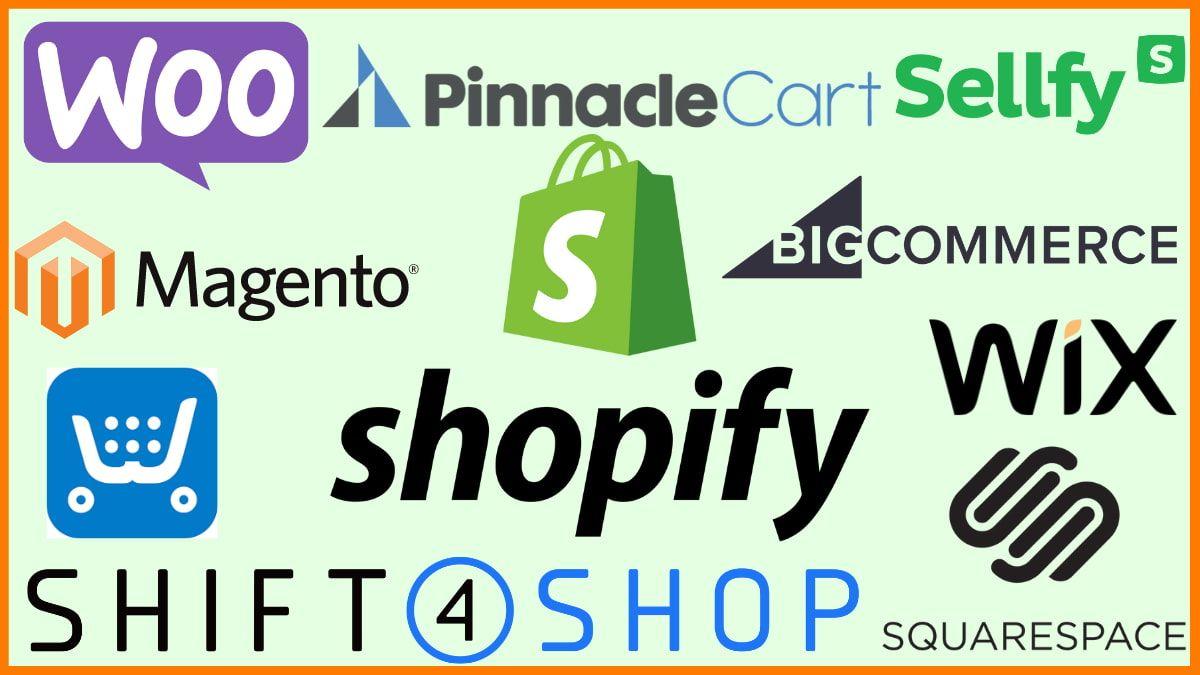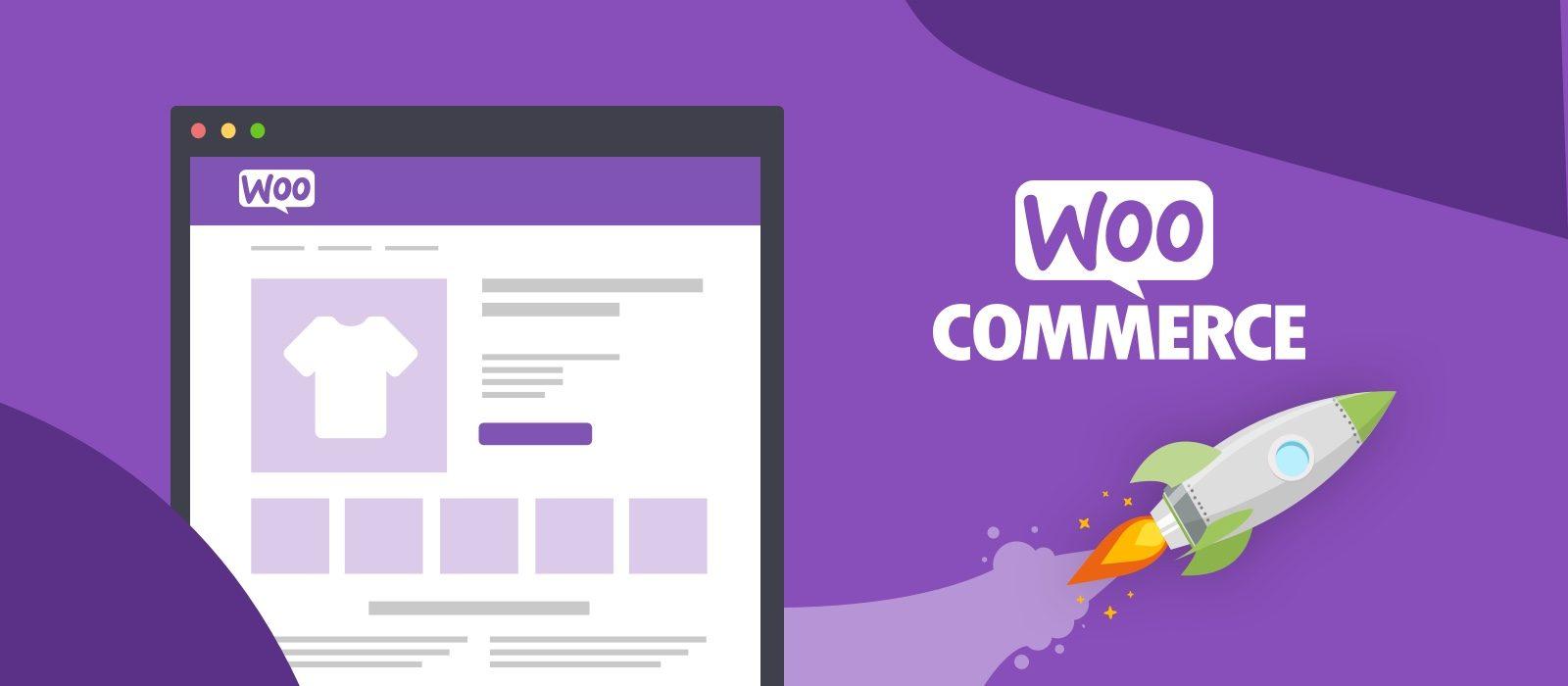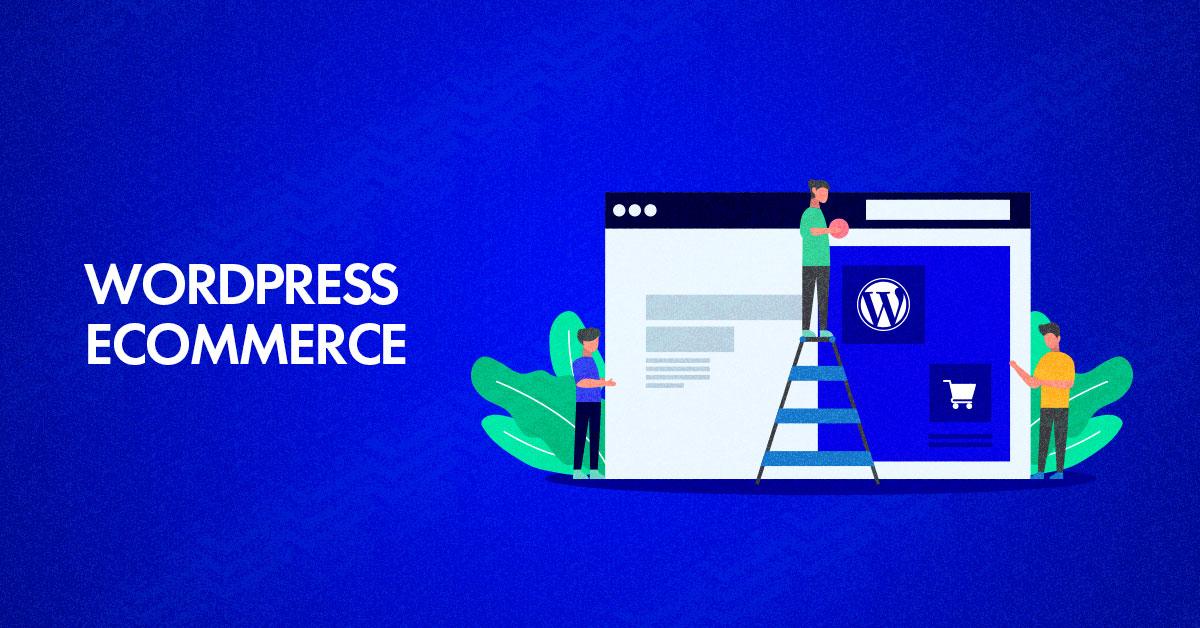introduction:
Hey there, eCommerce entrepreneurs! If you’ve got a fantastic online store full of amazing products but find that local customers just aren’t flocking to your website, you’re not alone. In today’s digital marketplace, standing out can feel like searching for a needle in a haystack. That’s where local SEO comes into play! Imagine this: you’re not just competing against the giants of the eCommerce world but also against every local shop in your area. So,how do you ensure that your store is the first place they see when searching for what you offer?
In this article,we’ll dive into the essential steps you need to take to boost your online store’s visibility within your community. From optimizing your google my Business listing to leveraging local keywords, we’ll cover actionable strategies that can help elevate your business to new heights. Wiht a little effort and the right techniques, you can connect with your local audience like never before, driving traffic and ultimately increasing those sales. Ready to get started? Let’s transform your online store into a local favorite!
Understanding the Importance of Local SEO for Your Ecommerce Store
In the rapidly evolving world of ecommerce, standing out can be a challenge, especially if your target market is localized. Local SEO plays a pivotal role in ensuring that your ecommerce store is not only visible but also appealing to the customers in your immediate area. By optimizing your online presence for local searches, you can attract more potential buyers who are looking for the products you offer.
one of the major benefits of focusing on local SEO is the increased foot traffic it can generate for your brick-and-mortar store, if applicable. Even if your ecommerce operation is purely online,local SEO can definitely help you build a loyal customer base by fostering trust and connection with your community. When customers see your store listed in local search results, they are more likely to view you as a credible option for their shopping needs.
to effectively implement local SEO strategies, consider the following key components:
- Google My Business: Claim and optimize your listing.Ensure your business name, address, and phone number (NAP) are consistent across all platforms.
- Local Keywords: Research and incorporate keywords that include your city or region. This helps search engines connect your ecommerce store with local users.
- Localized Content: Create blog posts,guides,or product descriptions that focus on your local community. This showcases your relevance and connection to the area.
- Customer Reviews: Encourage satisfied customers to leave positive reviews on Google and other platforms. This boosts your credibility and improves your local ranking.
Utilizing local backlinks is another strategy that should not be overlooked. Collaborate with local businesses, influencers, or bloggers to create backlinks to your site. This not only boosts your search engine rankings but also enhances your store’s visibility within the local community. The more reputable local sites that link to you, the more trustworthy you appear to search engines.
Lastly, don’t forget about mobile optimization. A notable number of local searches are conducted on mobile devices,so ensuring your ecommerce website is mobile-friendly is crucial. A seamless user experience will keep potential customers engaged and lead to increased conversions.
| Local SEO Strategy | Benefits |
|---|---|
| Google My Business | Increased visibility in local searches |
| Local Keywords | Attracts local shoppers |
| Localized Content | Builds community connection |
| Customer Reviews | Enhances credibility and trust |
| Mobile Optimization | Improves user experience |
Crafting a Google My Business Profile That Shines
Creating a standout Google My Business profile is essential for enhancing your local SEO strategy. When potential customers search for products or services you offer, a well-crafted profile can make the difference between a click and a pass. Here are some key elements to focus on:
- Complete Your Profile: Fill in every section of your profile, including your business name, address, phone number, and website. Incomplete profiles can deter customers.
- Add Quality Photos: Showcase your products, store interior, and team members. High-quality images can engage visitors and give them a feel for your brand.
- Utilize Posts: Regularly update your profile with news, promotions, and events. This not only keeps customers informed but also signals to Google that your business is active.
- Encourage Reviews: Ask satisfied customers to leave positive reviews. Responding to reviews, both positive and negative, shows that you value customer feedback.
- Optimize for Keywords: use relevant keywords in your business description and services offered. This increases your visibility in local searches.
Moreover, leveraging the Q&A feature on your profile can significantly enhance engagement. Be proactive and provide answers to common customer queries. This not only aids in building trust but also establishes you as an authority in your niche. Include keywords in your answers, as this can further improve your profile’s discoverability.
Another effective strategy is to maintain consistency across your online presence. Ensure that your business information is the same on all platforms, including social media, your website, and local directories.This uniformity helps Google trust your information and improves your overall rankings.
| Action | Benefit |
|---|---|
| Complete Profile | Enhances trust and visibility |
| Post Regular Updates | Keeps customers informed and engaged |
| Encourage Customer Reviews | Builds credibility and attracts new clients |
| Optimize with Keywords | Improves search rankings |
By focusing on these areas, you can craft a Google My Business profile that truly shines, driving more local traffic to your eCommerce store. Remember, every detail counts when it comes to making a lasting impression.
Optimizing your Website for Local Search Success
To effectively reach potential customers in your local area, it’s essential to tailor your website for local search. Start by ensuring your site is optimized for local keywords. Incorporate terms that reflect your location along with your products. As a notable example, if you sell handcrafted mugs in Denver, use phrases like “handcrafted mugs in Denver” throughout your content. This helps search engines understand your business’s focus and geographic relevance.
Another crucial aspect is Google My Business (GMB). Claim and verify your GMB listing to enhance your visibility in local searches. Make sure to provide complete and accurate information, including:
- business Name
- Address
- Phone Number
- Business Hours
- Website Link
Regularly update your GMB profile with posts, photos, and customer reviews. Engaging with your audience through this platform not only builds trust but also boosts your rankings on local search results.
Additionally, cultivate local backlinks. Connect and collaborate with other businesses in your area, participate in community events, or sponsor local organizations. These activities not only strengthen your local presence but also create valuable inbound links. here’s a speedy overview of effective ways to build local backlinks:
| Strategy | Description |
|---|---|
| Local Sponsorships | Support local events or teams to get featured on their websites. |
| guest Blogging | Write articles for local blogs or news sites and link back to your store. |
| Networking Events | Attend and connect with other local business owners. |
Lastly, don’t underestimate the power of customer reviews.Encourage satisfied customers to leave positive feedback on platforms like Google, yelp, and Facebook. A steady stream of reviews not only boosts your credibility but also enhances your search rankings. Respond to reviews, both positive and negative, to foster community and show that you value customer feedback.
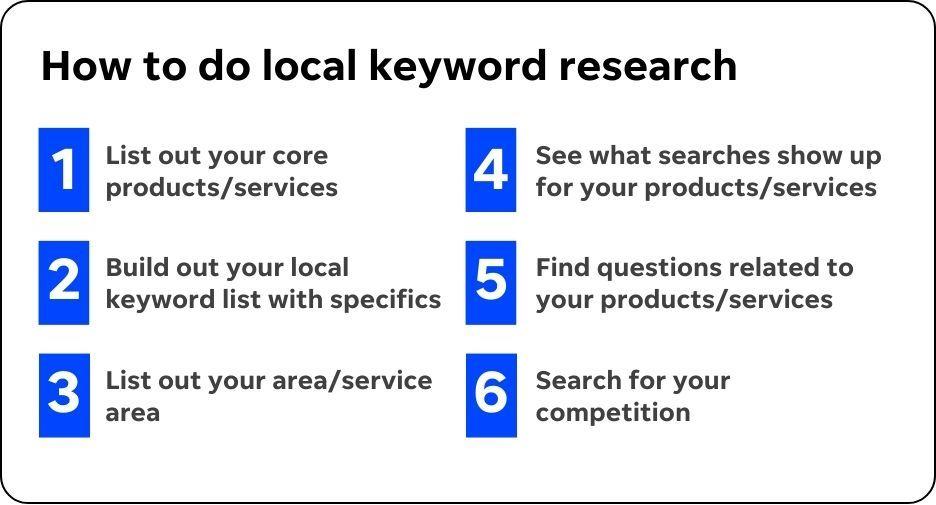
leveraging Local Keywords to Drive Targeted Traffic
To effectively tap into the potential of local SEO, integrating local keywords into your content strategy is essential. These keywords are essentially phrases that your target audience uses when searching for products or services in their area. By incorporating them into your website’s content, you can significantly improve your online store’s visibility in local search results.
When selecting local keywords, consider the following strategies:
- Research Local Trends: Utilize tools like Google Trends and Keyword Planner to identify what local consumers are searching for. This will help you tailor your product descriptions and blog posts to resonate with the local audience.
- Include Location in Your Keywords: Make sure to include your city, neighborhood, or region within your target keywords. As an example, if you sell handmade jewelry in Austin, use phrases like “handmade jewelry in Austin” or “Austin artisan jewelry” in your content.
- Analyze Competitors: Look at your competitors’ websites to see which local keywords they are targeting. This insight can guide you in refining your own keyword strategy.
Once you have a list of local keywords, it’s time to implement them across various parts of your online store:
- Product Descriptions: Infuse local keywords naturally into your product descriptions. This not only boosts your SEO but also makes your offerings more relatable to local shoppers.
- Blog Content: Create blog posts that specifically address local events or trends relevant to your products. Such as, a seasonal guide for local festivals could attract visitors looking for items related to those events.
- Meta Tags and alt Text: Don’t forget to optimize your meta descriptions, title tags, and image alt texts with local keywords. This enhances your chances of appearing in search results when potential customers search for those terms.
Along with using local keywords, consider creating a dedicated location page on your website. This page can showcase your store’s address,contact information,and local offerings. Here’s a simple layout you might consider:
| location | Products Available | Operating Hours |
|---|---|---|
| austin | Handmade Jewelry, Art Prints | Mon-Fri: 10am – 6pm |
| Dallas | Craft Supplies, Home Décor | Sat-Sun: 11am – 5pm |
By focusing on local keywords and showcasing your offerings effectively, you can attract a targeted audience looking to shop right in their neighborhood. Remember, the goal is not just to drive traffic but to convert those visitors into loyal customers who appreciate the local touch your store provides.
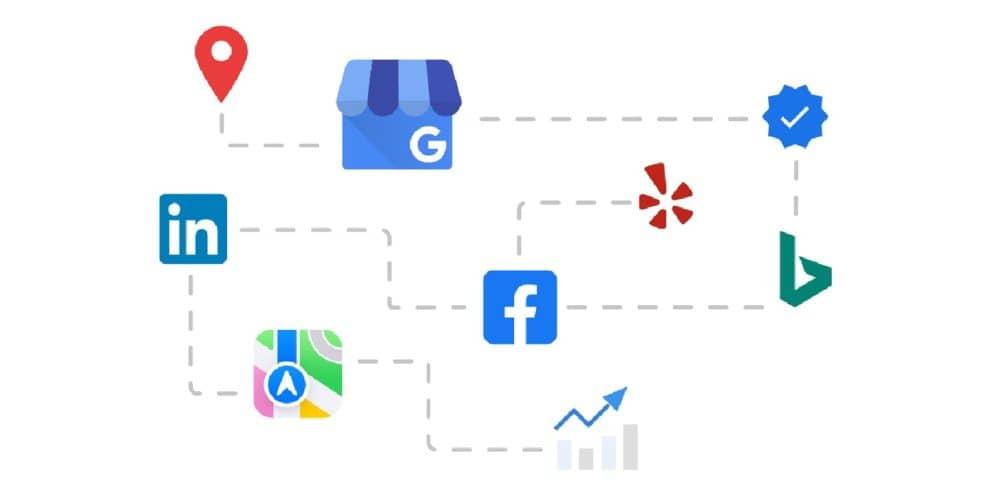
Building Local citations to Enhance Your store’s Credibility
Establishing local citations is a powerful strategy for enhancing your store’s credibility and visibility in the competitive eCommerce landscape. Local citations refer to any online mention of your business’s name, address, and phone number (NAP). These mentions can occur on various platforms, such as directories, social media, and local business listings. The more accurate and consistent your citations are across the web, the more trustworthy your business appears to search engines and potential customers.
To effectively build local citations,consider the following tactics:
- List in Online Directories: Ensure your store is listed on popular online directories such as Google My Business,Yelp,and Yellow Pages. These platforms not only enhance visibility but also serve as trusted resources for local information.
- Utilize Local Chamber of Commerce: Joining your local Chamber of Commerce can provide opportunities for citation building. Being associated with a reputable local organization boosts your credibility.
- Engage with Local Blogs and Websites: Reach out to local bloggers or community websites to feature your business. They often have established audiences and can link back to your site, enhancing your visibility.
Consistency is crucial when it comes to local citations. Ensure that your NAP details are identical across all platforms. Discrepancies can confuse search engines and lead to a lower ranking in local searches. A simple way to keep track of your citations is to create a table that outlines where your business is listed:
| Directory Name | Link | Status |
|---|---|---|
| Google My Business | Visit | Active |
| Yelp | Visit | Active |
| Yellow Pages | Visit | Pending |
Moreover, don’t underestimate the power of social media. Platforms like Facebook, Instagram, and Twitter play a pivotal role in local citation building. Ensure that your business profile is complete with up-to-date information, and engage with your audience through local events and promotions. This social engagement not only enhances your online presence but also establishes trust within your community.
By proactively building local citations and ensuring consistency across multiple platforms,you significantly enhance your store’s credibility. This not only helps in attracting more local customers but also boosts your overall local search rankings, making your online store a go-to destination for local shoppers.
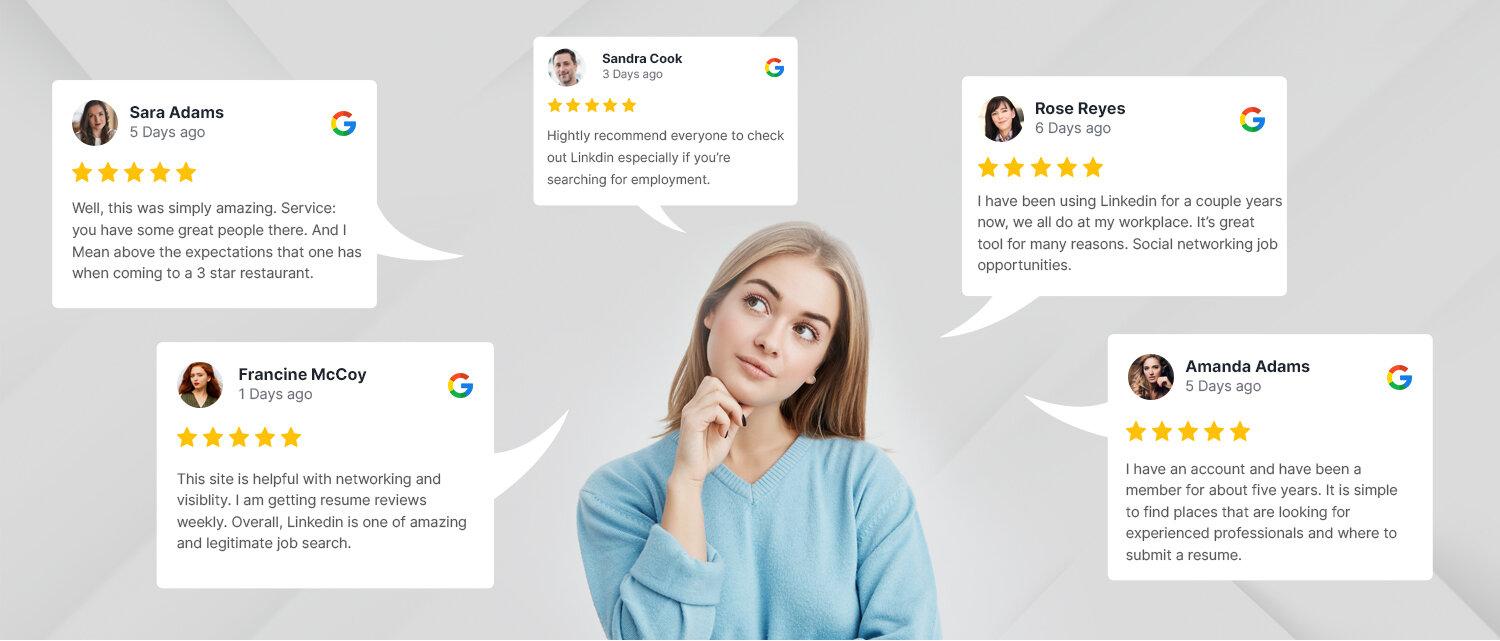
Encouraging Customer reviews to Boost your Local Reputation
One of the most effective ways to enhance your local reputation is by encouraging your customers to leave reviews. Positive reviews not only bolster your credibility but also improve your visibility in local search results. Here’s how you can motivate your customers to share their experiences:
- Ask for Feedback: After a purchase,send a follow-up email thanking your customers and gently requesting a review. Make it personal—mention their name and perhaps reference the product they bought.
- Make It Easy: Streamline the review process by providing direct links to your review platforms. Whether it’s Google My Business, Yelp, or Facebook, simplify the steps they need to take.
- incentivize Reviews: Consider offering a small discount on their next purchase or entering them into a raffle for a gift card in exchange for a review. just be sure to comply with platform guidelines.
- Showcase Reviews: display your positive reviews prominently on your website and social media pages. This not only validates the experiences of those who have left feedback but also encourages others to contribute.
Furthermore, responding to reviews—both positive and negative—demonstrates that you value customer feedback. Take the time to thank those who leave positive comments and address any concerns in a professional manner. This engagement can turn a one-time customer into a loyal advocate for your brand.
Consider creating a dedicated section on your website for testimonials. A well-organized table can showcase customer feedback effectively. Here’s a simple example:
| Customer Name | Review | Rating |
|---|---|---|
| Jane Doe | “Fantastic service and quick delivery!” | ⭐⭐⭐⭐⭐ |
| John Smith | “Great quality products, will definitely buy again.” | ⭐⭐⭐⭐⭐ |
| Alice Johnson | “Had an issue with my order, but customer service resolved it quickly.” | ⭐⭐⭐⭐ |
By actively soliciting and showcasing customer reviews, you’ll not only build trust within your community but also enhance your local SEO strategy. Each review serves as fresh content that can improve your search rankings while attracting more potential customers to your online store.

Utilizing Social Media to Connect with Your Local Audience
Engaging with your local audience through social media is a powerful strategy that can significantly enhance your ecommerce visibility. Local customers are frequently enough looking for businesses that cater specifically to their needs, and social platforms provide an ideal space to connect and interact with them. By utilizing targeted social media tactics, you can create a vibrant online community that not only raises brand awareness but also drives traffic to your online store.
Start by identifying where your potential customers spend their time online. Different demographics gravitate towards different platforms, so it’s crucial to understand your audience’s preferences. As an example, if your target market is younger, platforms like Instagram and TikTok might be more effective. Here are some ways to leverage social media for local engagement:
- Share Local Content: Post about local events, news, and highlights that resonate with your audience. This positions your brand as a local expert.
- Engage in Conversations: Respond promptly to comments and messages. This fosters a sense of community and shows that you value your customers.
- User-Generated Content: Encourage customers to share photos of your products in their local settings. This not only builds trust but also promotes your brand organically.
Another effective strategy is to collaborate with local influencers. Partnering with individuals who have a strong local following can amplify your reach and credibility. Local influencers can showcase your products in a relatable way, making your ecommerce store more approachable to potential customers. Consider creating a simple table to track effective collaborations:
| Influencer Name | Platform | Engagement Rate |
|---|---|---|
| Jane Doe | 12% | |
| John Smith | 15% | |
| Local Foodie | 10% |
Lastly, don’t underestimate the power of local hashtags. Using location-specific hashtags in your posts can increase visibility among local users who are searching for businesses in their area. Combine branded hashtags with local hashtags to effectively promote your content and create a buzz around your products. This small change can have a substantial impact on your local SEO efforts.

Implementing Local Content Marketing Strategies that Resonate
To truly connect with your community, it’s essential to tailor your content marketing strategies to align with local interests and needs. This approach not only enhances your brand’s visibility but also fosters a sense of trust and loyalty among customers. here are some key tactics to implement:
- Highlight Local events: create blog posts or social media updates that feature local events,festivals,or happenings. This not only attracts local traffic but positions your brand as a community-oriented business.
- leverage Local Influencers: Collaborate with local influencers who resonate with your target audience. Their endorsement can significantly amplify your reach and credibility.
- utilize User-Generated Content: Encourage your customers to share their experiences with your products. Feature their stories and images on your website and social media, creating a sense of community.
- Localized SEO Keywords: optimize your content with keywords that reflect local searches. Incorporate terms and phrases that your potential customers are likely to use when looking for products you offer.
In addition to creating relevant content, consider the importance of local backlinks.Building relationships with local businesses, organizations, and bloggers can enhance your authority and boost your SEO. Here’s how you can go about it:
- Guest Blogging: Write guest posts for local blogs or news sites. This not only provides valuable links but also positions you as an expert in your field.
- Community Sponsorship: Sponsor local events or charities. This strategy often comes with backlinks from event pages or social media mentions.
- Engage with Local Directories: Ensure your business is listed in local online directories.This increases your visibility and helps with local SEO.
Lastly, don’t underestimate the power of analytics. Use tools like Google Analytics to track the effectiveness of your local content marketing strategies. Assess which types of content resonate most with your audience and adjust your approach accordingly. Here’s a simple table to illustrate the types of content and their potential impact:
| Content Type | Engagement Level | Local SEO Impact |
|---|---|---|
| Blog Posts on Local Events | High | Significant |
| User-Generated Content | Very High | Moderate |
| Local Influencer Collaborations | High | High |
| SEO-Optimized Local Pages | Moderate | Very High |
By embracing these localized content marketing strategies, you’ll not only enhance your online presence but also build lasting connections with your community. Remember, the more you resonate with your local audience, the more likely they are to choose your online store over competitors.
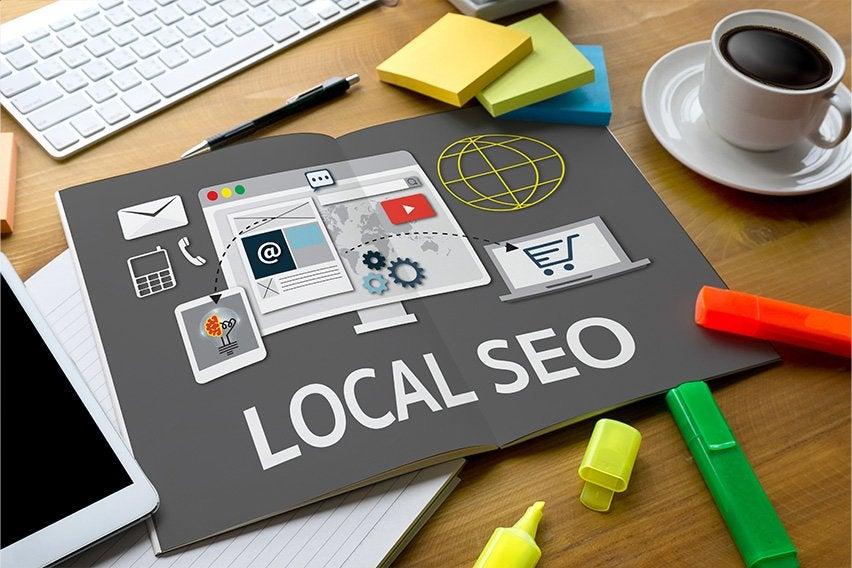
Measuring Your local SEO Success and Making Adjustments
Understanding the effectiveness of your local SEO efforts is crucial for improving your online store’s visibility. To accurately gauge your success, focus on specific metrics that indicate how well your strategies are resonating with your target audience. Here are some key performance indicators (KPIs) to monitor:
- Organic Traffic: Keep an eye on the number of visitors arriving at your site from organic searches. A steady increase signifies that your local SEO is on the right track.
- Local Keyword Rankings: track how your targeted keywords rank in local search results. Tools like Google Search Console can help you see where you stand.
- Click-Through Rate (CTR): A higher CTR means that your listings are appealing to users,indicating effective optimization of titles and descriptions.
- Conversion Rate: Ultimately, the goal is to convert visitors into customers. monitor how many visitors complete purchases,sign up for newsletters,or engage with your brand.
Regularly revisiting these metrics allows you to identify trends over time. as an example, if you notice a drop in local traffic or keyword rankings, it could be a sign that your competitors have upped their game, or your content requires refreshing. Make it a habit to conduct thorough audits of your local SEO strategy at least once every quarter. This will enable you to stay competitive and maintain,or even boost,your visibility.
| Metric | Ideal Value | Action If Below Ideal |
|---|---|---|
| Organic Traffic | 20% increase quarterly | Optimize content, add new keywords |
| local Keyword rankings | Top 3 positions | Revise SEO strategy, enhance backlinks |
| CTR | above 3% | Improve titles and meta descriptions |
| Conversion Rate | At least 2% | Evaluate landing pages, streamline checkout |
Once you have gathered and analyzed your data, it’s time to make necessary adjustments. For instance, if certain keywords are performing well, consider creating more content around those topics. Conversely, if a keyword is underperforming, re-evaluate its relevance and make improvements. Additionally,consider localizing your content further by including community events or partnerships that may resonate with your audience. This not only helps in SEO but also builds stronger connections with your community.
don’t forget the power of customer feedback. Encourage reviews and direct input from your audience regarding their shopping experience. This can provide invaluable insights to fine-tune your approach and ensure that your local SEO efforts align with what customers truly value. By measuring success and being willing to adapt, your ecommerce store can thrive within your local market.
Frequently Asked Questions (FAQ)
Q&A: Local SEO for Ecommerce – Steps to Boost Your Online Store’s Visibility Locally
Q: What exactly is Local SEO and why is it important for ecommerce businesses?
A: Great question! Local SEO is all about optimizing your online presence to attract more business from relevant local searches. for ecommerce businesses,this is crucial because it helps you tap into local markets,connect with nearby customers,and compete effectively with larger retailers. By optimizing your site for local search, you can increase visibility, drive more traffic, and ultimately boost sales.
Q: How can I start with local SEO for my ecommerce store?
A: Start by claiming your Google My Business (GMB) listing. This is your digital storefront on Google and is essential for local visibility. Make sure to fill out all the details, including your business name, address, phone number, and hours of operation.Having accurate and consistent information is key!
Q: Are there specific keywords I should focus on for local SEO?
A: Absolutely! Incorporate geo-targeted keywords into your product descriptions and website content. Think about what local customers might search for,like “best running shoes in [City Name].” Tools like Google keyword Planner can help you identify popular local search terms.
Q: What role dose content play in local SEO?
A: content is king, even in local SEO! Create blog posts, guides, or local event pages that incorporate local keywords. Share relevant content that resonates with your community,such as local news,trends,or customer stories. This not only helps with ranking but also builds trust with your audience.
Q: How can I leverage social media for local SEO?
A: Social media is a powerful tool for local SEO! Engage with your local community by sharing content that highlights your products, local events, or partnerships. Use location tags in your posts and encourage customers to share their experiences with your products. This boosts your visibility and creates a sense of community around your brand.
Q: What about customer reviews? Do they really make a difference?
A: Yes,they absolutely do! Customer reviews enhance your credibility and improve your local search rankings. Encourage satisfied customers to leave positive reviews on platforms like Google and Yelp. Respond to reviews, both positive and negative, to show that you value customer feedback and engagement.
Q: Should I focus on building local backlinks?
A: Definitely! Building local backlinks from reputable websites can significantly improve your local SEO. Collaborate with local bloggers, participate in community events, or sponsor local organizations to create opportunities for backlinks. the more local authority your site has,the better your rankings will be.Q: Are there any tools you recommend for tracking my local SEO efforts?
A: Yes! Tools like moz Local, brightlocal, and SEMrush can help you monitor your local SEO performance. They provide insights on rankings, site performance, and even competitor analysis. Keeping track of your progress can help you fine-tune your strategy for better results.
Q: what’s the biggest takeaway for ecommerce stores looking to improve their local SEO?
A: The biggest takeaway is to think local in everything you do! From your website content and social media engagement to leveraging local partnerships, focus on building a presence in your community. By connecting with local customers and optimizing for local searches, you’ll not only drive traffic but also cultivate long-lasting relationships that keep customers coming back.
Q: So, is investing in local SEO worth it for ecommerce businesses?
A: Absolutely! Investing in local SEO can provide a significant return on investment. With more consumers looking to shop locally, enhancing your online store’s visibility in your community can lead to increased traffic, higher conversion rates, and ultimately, more sales.It’s a strategy that pays off!
Wrapping Up
As we wrap up our deep dive into local SEO for eCommerce, it’s clear that making your online store visible to local customers is not just an option—it’s a necessity. With more people turning to their devices to find products nearby, optimizing your eCommerce site for local search can be the game-changer you’ve been looking for.
Remember, every small step you take—whether it’s claiming your Google My Business listing, optimizing your product descriptions with local keywords, or encouraging customer reviews—adds up to significant visibility in your community. And the best part? These strategies not only drive traffic but also build trust and loyalty among local shoppers.
So, are you ready to take your online store to new heights? By implementing the steps we’ve discussed, you’ll not only attract more customers but also create a strong local presence that sets you apart from your competitors.
Don’t wait any longer—start integrating local SEO practices into your eCommerce strategy today. Your local customers are searching for you right now,and with the right approach,you can ensure that they find you first. Let’s make your store the go-to destination for local shoppers!

